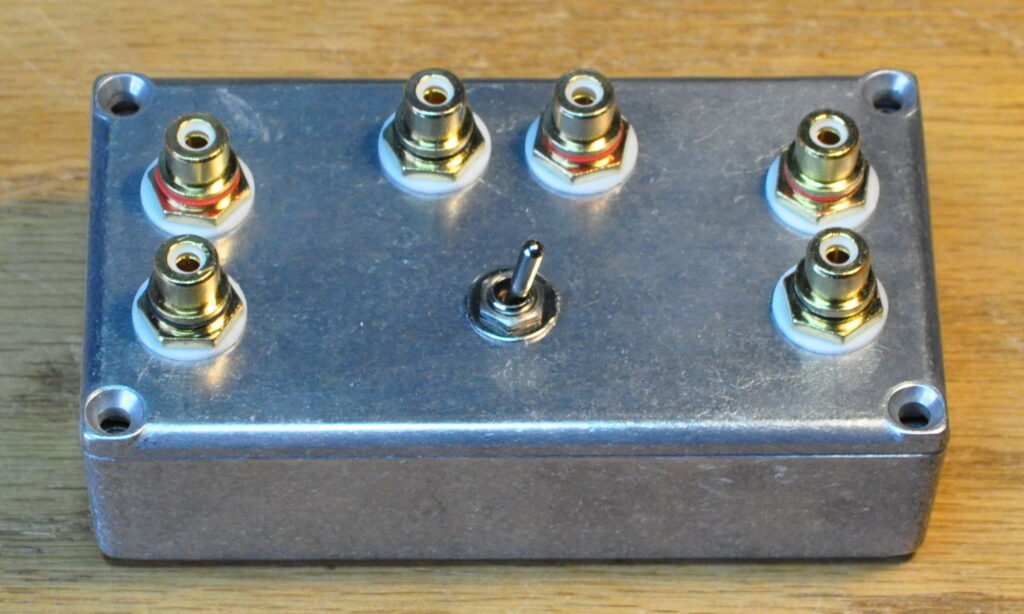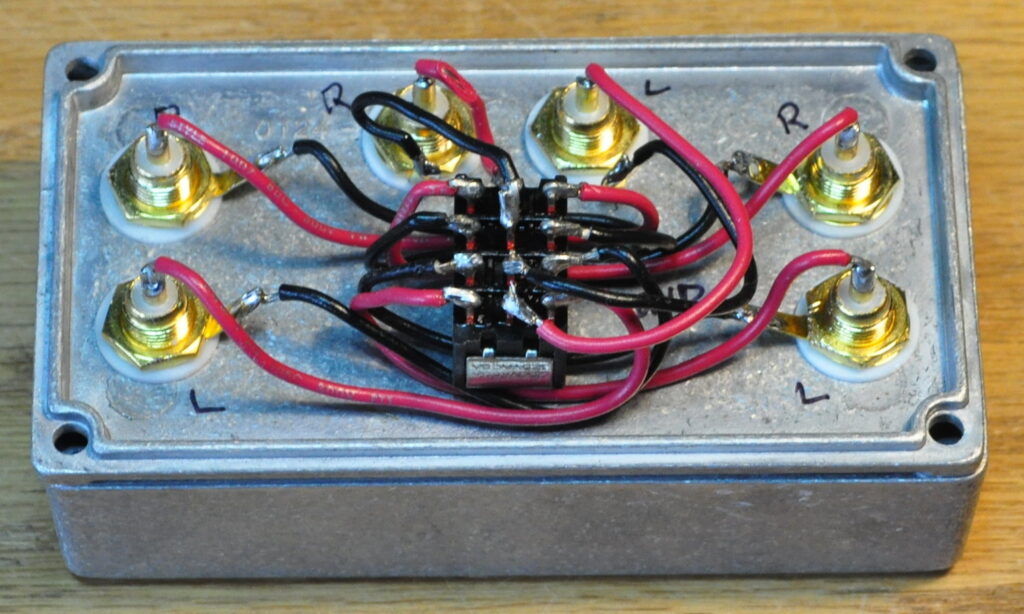There are some projects which are not big or flashy. Simple little things which are easy to build and fill a tiny but important niche in our audio setups. I call these “popcorn” projects.
I would love to be able to take credit for the name but I can’t. My wife and I both spend a lot of time working with our hands and making things. We both always have multiple projects in the queue, each in various states of completion. When my wife finishes a large or complicated project, she often says she needs a “popcorn” project. These are simple projects which go together quickly, don’t require lots of planning or detailed attention, but are nonetheless satisfying to complete. Hence the name “popcorn”. Something quick and not too difficult, but satisfying.
Today, I assembled one of these projects. It took maybe two hours from gathering the parts to completion. You see, lately I’ve been adding little bluetooth receivers by all my amps around the house. These are just the tiny little cubes that run off a wall wart and provide analog audio output. Like this one here. This way, anyone with a cell phone, iPad, or laptop that wants to play some music can connect to the amp. The only issue is the amps already have an input source and I don’t like swapping cables. So what’s needed is just a simple little source selection switch. So that’s what I built.
Here’s how it looks, inside and out.
This is literally just a 4PDT switch and six RCA connectors in a Bud CU-124 cast aluminum box. Now I can plug in both the original source and the bluetooth receiver and just switch between the two sources. What’s better is if someone wants to play something through an amp I don’t even have to get up. I just tell them to connect to the bluetooth and flip the switch. No tinkering required.
I find little projects like this very satisfying. When I feel the need to do a little assembly but don’t want to fidget with one of the bigger projects I’ve got going, something like this makes for an interesting and enjoyable diversion. Let me know in the comments if you have any “popcorn” projects that you’ve enjoyed building lately.
As always, questions and comments are welcome.



I think it is normal to have a couple of active projects open at the same time. I have about 3 books I am reading now.
Matt,
Can you tell us a little more about the bluetooth receivers that you use? I, and maybe others, are looking for something like that. Maybe even a photo too?
Dave K.
They are just small inexpensive ones like the one linked. In fact, I even have one of those very receivers.
When it comes to BT receivers all the digital front ends are going to give very similar performance. Most of the D-to-A back ends (at least at this price point) are going to perform similarly as well. To get the best fidelity in a BT receiver, you’ll really need couple a receiver with a digital output to a nice quality DAC.
This is something I might do in a dedicated listening area, but just around the house, the fidelity of the units like the one linked is more than sufficient.
Matt,
How would you rate the audio quality? AM radio, FM radio, CD?
Almost all of my listening is online streaming from mass media providers via tablets or laptop by means of the 3.5 mm analog jack to my external amplifiers. I would rate the sound quality as good quality FM radio. My wife has a pair of low cost bluetooth headphones, and I would rate them as AM radio sound quality – some bass, ok midrange, little to no treble.
For the unit I linked in this post, I would say that it’s somewhat better than FM quality from a quality receiver. But it’s not what I would call really high fidelity. I find it fine for general use in the family room for background listening but It’s not quite up to snuff for a dedicated listening setup.
The issue with blue tooth devices is in how the analog conversion is handled. Even most inexpensive blue tooth digital receivers handle the digital decoding extremely well. The quality of the bit stream is determined almost entirely by signal-to-Noise ratio (SNR) at the receiver antenna. Once that gets above a certain threshold, the bit stream is essentially perfect. It’s the analog conversion that separates them. Most analog conversions are relatively good solid state solutions. I’ve seen some cheap ones that were pretty bad, but most are more than ok. That’s just the state of technology today.
Where issues generally arise, such as the headphones you reference, is the implementation of the analog signal to sound. Using your example; in headphones generally it’s very difficult to achieve good sound quality, especially across frequency. The very short free air distance, necessary driver quality, ear cuff and driver design, venting, etc. all require some really good Engineering to get right. Couple this with the fact that the gaming community will except some truly atrocious audio headphone quality (to say nothing of the whole “ear bud” crowd) and the result is a lot of bad sounding headphones. Personally I have never found a pair of wireless headphones that equal even the mid-tier wired phones (like the Sony MDR-V6s which are the pervious version of the MVR-7506).
As I said, to get really good audio I’d use a BT receiver with a digital output (I personally prefer optical, i.e. SPDIF) coupled with a good DAC, maybe something like the S.M.S.L SU-1, the Douk Audio Q11, or the FiiO K11 R2R. All of these DACs are really good without breaking the bank. Any decent quality BT receiver could be paired up with any of these to produce a really nice solution. Something like the 1Mii B206Pro is a really nice receiver which supports digital output and costs less than $40 USD. A solution like this will be better than anything produced by a small integrated unit like I linked. There are also some higher end DACs which support BT as well like the S.M.S.L. DL100 which is still only $180 USD on amazon.
This is probably way more than you wanted to know but I thought I give a few different starting points for research.
Thanks